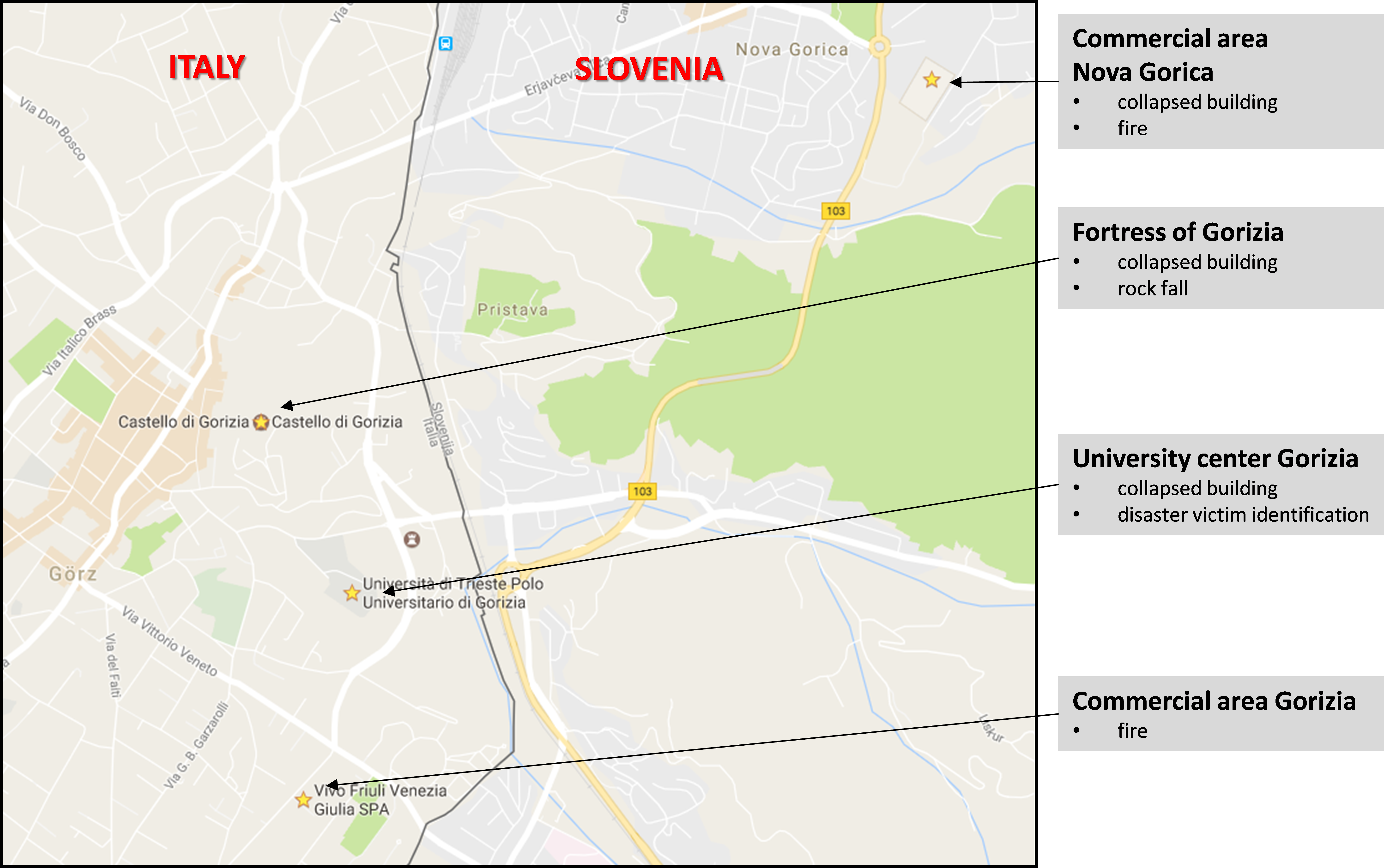Contact
At the Civil Protection Center in Palmanova, Italy, the research project EPISECC* , funded by the European Community’s Seventh Framework Programme FP7, demonstrated innovative information technology to enable between public safety agencies. The electronic information exchange between these stakeholders will aide them in to large disasters, such as floods, earthquakes, forest fires, technical incidents, or terrorist attacks.The field took place on May 11-12, 2017 and tested the of information systems from the civil protection authority, fire fighters, mountain rescue teams and paramedics of Italy, Slovenia and Austria. The EPISECC project aims to develop the concept of a “Common Information Space” to become the key element in a future integrated Pan-European and capacity.
The final goal of this was to validate the architecture of the "Common InformationSpace" (CIS) as well as the taxonomy and antologic model as developed and defined in the EPISECC project. The consortium jointly developed a SW-prototype implementing these concepts.
Tools of EPISECC partners and of external parties, which are actually used by responder organisations, are sharing information, using the CIS adaptors. Semantic services enable the mutual understanding of information exchanged cross language and culture barriers between the organisations involved in disaster response. The data protection concept allows to establish sub-groups of CIS participants (Cooperation Group Online Room CGOR) who exclusively share information between the stakeholders involved in one incident.
Gaps
Common understanding of the information exchanged in response operations
Different organisations and countries that are not collaborating in daily business may have to work together in large during which a common understanding of the situation and access to the latest information is crucial. The barriers between units come from different natural languages but mainly from different and taxonomy. There is ongoing work towards symbology harmonisation (INDIGO) but they are not implemented widely. Priority areas where common is needed have to be identified and a standard terminology needs to be agreed in such areas. Tools and mechanisms to support the dissemination and implementation of common terminology are necessary, as well as exercises to support the harmonisation of terminology or the mutual understanding of different terminologies.
References in the literature: this is well recognised and detailed in the literature
Shortcomings in the ability to exchange crisis-related information among agencies and organizations
A that supports the exchange of -related information among all organizations involved in .
combining the flood maps with information (maps) in LCMS). Assessing the effect of the flood on
traffic management (for formulation of possible evacuation strategies).
Exchanging crisis-related information among agencies and organizations
Overarching objective of the EPISECC was to validate the concept and architecture of the "Common InformationSpace" (CIS) and the related taxonomy and ontologic model that were developed and defined in the EPISECC project.
Objectives
Validation of the "Common Information Space" concept
The final goal of this was to validate the architecture of the "Common InformationSpace" (CIS) as well as the taxonomy and antologic model as developed and defined in the EPISECC project. The consortium jointly developed a SW-prototype implementing these concepts.
Test the feasibility of seamless exchange of information using the EPISECC CIS adaptors
Test the interaction of the tools used by the EPISECC partners and the CSI adapters for the seamless exchange of information.
EPISECC validated the feasibility of the seamless electronic information exchange between civil protection authority, fire fighters, mountain rescue teams and paramedics of Italy, Slovenia and Austria. The simulates the to large disasters, such as floods, earthquakes, forest fires, technical incidents, or terrorist attacks.
Scenarios
The starting situation for the EPISECC is defined as follows:
On May 11th 2017 at 09:59 local time an earthquake is happening in the province
of Udine in the region Friuli-Venezia Giulia.
The epicentre is located in the municipality of Drenchia at the coordinates
46°10'16.1"N 13°37'32.5"E.
The earthquake has a magnitude of 6.2 at a depth of 10.54 km.
This earthquake has fatal impact on the whole region including Italy, Slovenia and Austria. The main operational area for the operations performed by the responders within the EPISECC is the border region between Italy and Slovenia at the cities of Gorizia and Nova Gorica. The cascading effects relevant for the EPISECC scenario in this area are:
- Collapsed buildings
- Rock falls
- Obstructed roads
- Fire in commercial areas
- People trapped under the rubble
- Injured people
- Fatalities
Operating Sites
In Goriza (IT) three different operating sites will be involved:
- Fortress of Gorizia
- University Centre of Gorizia
- Commercial area in Gorizia
In Nova Gorica (SLO) one operating site will be played:
- Commercial area in Nova Gorica
The operating sites have been chosen based on the requirements arising from the uses cases, the storyboard and the 2 hours time frame for the scenario play:
- Cross-border scenario with engagement of international responders
- Integration of field equipment such as radios and smart devices
- Real time tracking of field resources

 |
Portfolio of Solutions web site has been initially developed in the scope of DRIVER+ project. Today, the service is managed by AIT Austrian Institute of Technology GmbH., for the benefit of the European Management. PoS is endorsed and supported by the Disaster Competence Network Austria (DCNA) as well as by the STAMINA and TeamAware H2020 projects. |